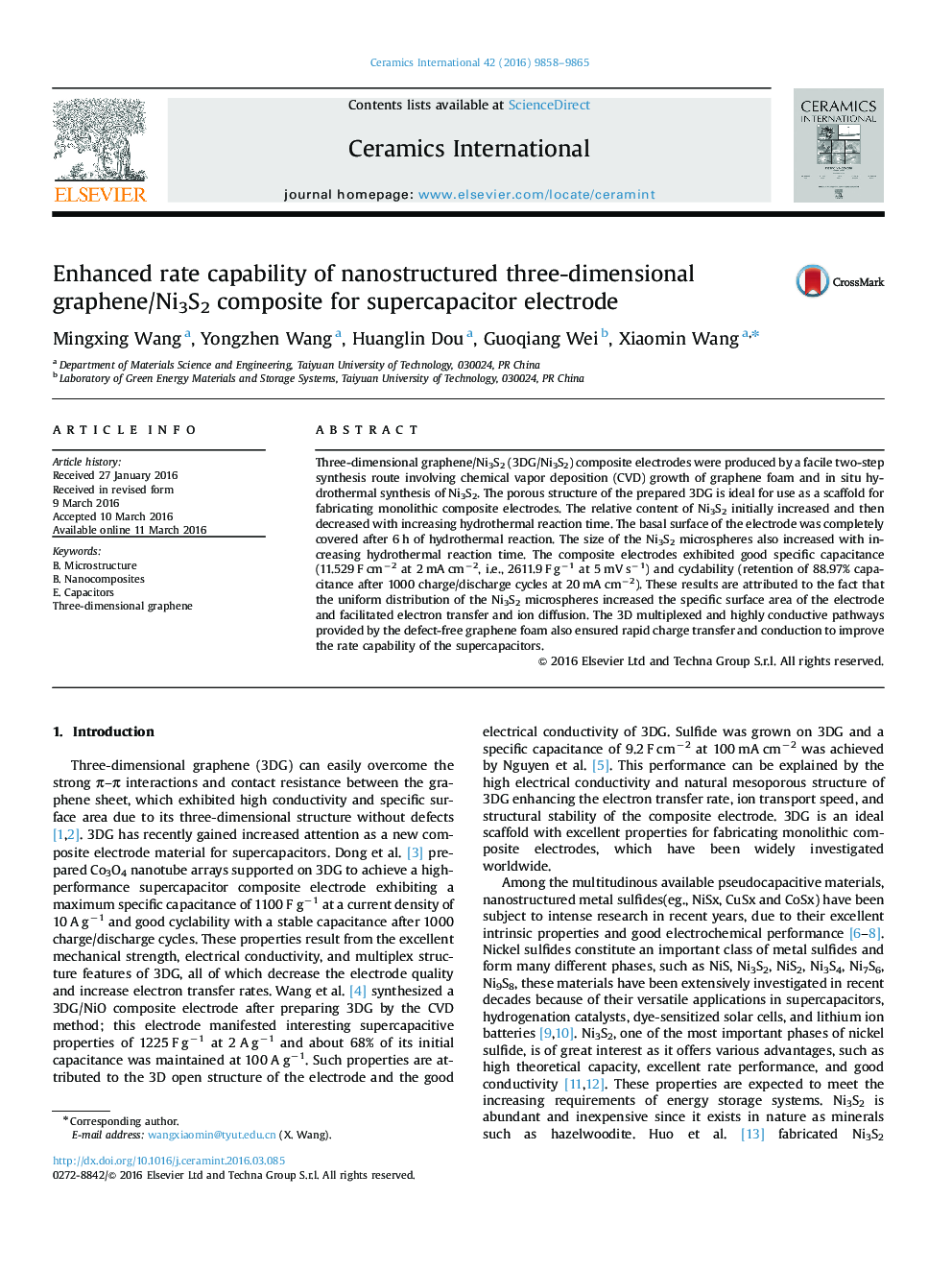| Article ID | Journal | Published Year | Pages | File Type |
|---|---|---|---|---|
| 1459066 | Ceramics International | 2016 | 8 Pages |
Abstract
Three-dimensional graphene/Ni3S2 (3DG/Ni3S2) composite electrodes were produced by a facile two-step synthesis route involving chemical vapor deposition (CVD) growth of graphene foam and in situ hydrothermal synthesis of Ni3S2. The porous structure of the prepared 3DG is ideal for use as a scaffold for fabricating monolithic composite electrodes. The relative content of Ni3S2 initially increased and then decreased with increasing hydrothermal reaction time. The basal surface of the electrode was completely covered after 6Â h of hydrothermal reaction. The size of the Ni3S2 microspheres also increased with increasing hydrothermal reaction time. The composite electrodes exhibited good specific capacitance (11.529Â FÂ cmâ2 at 2Â mAÂ cmâ2, i.e., 2611.9Â FÂ gâ1 at 5Â mVÂ sâ1) and cyclability (retention of 88.97% capacitance after 1000 charge/discharge cycles at 20Â mAÂ cmâ2). These results are attributed to the fact that the uniform distribution of the Ni3S2 microspheres increased the specific surface area of the electrode and facilitated electron transfer and ion diffusion. The 3D multiplexed and highly conductive pathways provided by the defect-free graphene foam also ensured rapid charge transfer and conduction to improve the rate capability of the supercapacitors.
Related Topics
Physical Sciences and Engineering
Materials Science
Ceramics and Composites
Authors
Mingxing Wang, Yongzhen Wang, Huanglin Dou, Guoqiang Wei, Xiaomin Wang,
